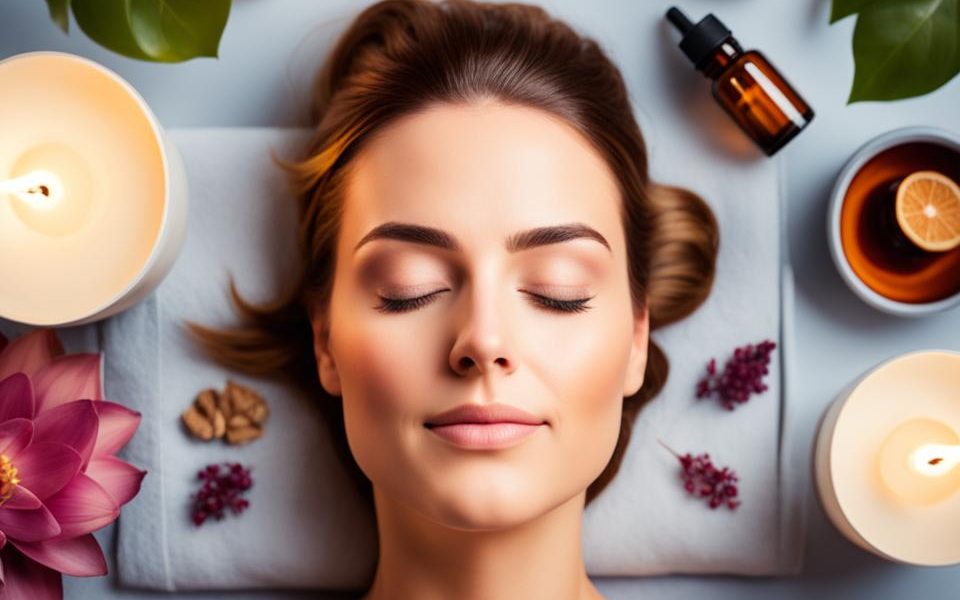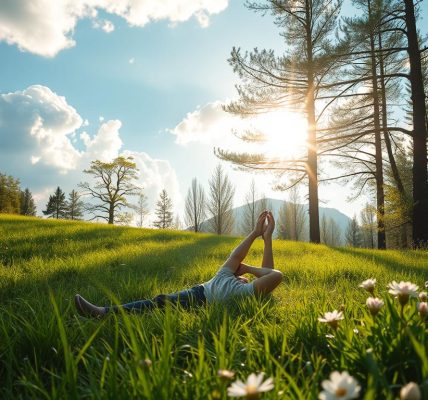In today’s fast-paced, stressful world, finding ways to relax and unwind is more important than ever. This article will explore a variety of proven relaxation techniques that can help you reduce stress, improve your mental health, and cultivate a calmer, more balanced lifestyle. From mindful breathing exercises and yoga to progressive muscle relaxation and mindfulness practices, you’ll discover effective strategies to help you relax and find greater inner peace. Whether you’re looking to incorporate relaxation into your daily routine or seeking ways to manage specific stressors, this guide will provide you with the tools and insights you need to live a more relaxed and fulfilling life.
Read more interesting information at ::ds-collection
Introduction to Relaxation Techniques
In the hustle and bustle of modern life, it’s easy to feel overwhelmed and constantly on the go. However, incorporating relaxation techniques into your daily routine is essential for maintaining your physical and mental health. This section will explore why relaxation is so crucial in today’s world and the numerous benefits it can provide.
Why Relaxation is Essential in Modern Life
The fast-paced, technology-driven nature of our society has led to a significant increase in stress levels, with many individuals struggling to find time for self-care and mental well-being. Engaging in regular relaxation techniques can help counteract the negative effects of this high-stress environment, allowing you to achieve a greater sense of balance and inner calm.
Benefits of Incorporating Relaxation Practices
From reducing stress and anxiety to improving cognitive function and physical health, the benefits of incorporating relaxation practices into your life are numerous and far-reaching. By dedicating time to activities such as mindful breathing, meditation, or gentle yoga, you can experience a range of positive outcomes, including enhanced mental well-being, improved sleep quality, and an increased ability to manage daily challenges with greater resilience.
Ultimately, making relaxation a priority is a vital investment in your overall well-being, empowering you to navigate the demands of modern life with greater ease and clarity.
Breathing Exercises for Stress Relief
One of the most accessible and effective relaxation techniques is focused breathing exercises. Intentional breathing can have a profound impact on your physical and mental state, helping to calm the mind, reduce stress, and promote a sense of inner peace. Let’s explore some powerful breathing techniques that can help you find greater relaxation and stress relief.
Deep Breathing Techniques
Deep breathing, or diaphragmatic breathing, is a simple yet powerful mindfulness practice that can quickly induce a state of relaxation. By focusing on taking slow, deep breaths, you can activate the parasympathetic nervous system, which is responsible for the body’s “rest and digest” response. This can help to lower blood pressure, slow the heart rate, and reduce feelings of stress and anxiety.
Alternate Nostril Breathing
Another effective breathing exercise for stress relief is alternate nostril breathing, also known as Nadi Shodhana. This technique involves rhythmically inhaling and exhaling through one nostril at a time, alternating between the left and right. This balanced breathing pattern can help to create a sense of calm, improve concentration, and promote a greater sense of mindfulness.
Mindfulness and Meditation Practices
Mindfulness and meditation are powerful relaxation techniques that can help you cultivate a greater sense of present-moment awareness and inner peace. By training your mind to focus on the here and now, you can break free from the cycle of worrying about the past or anxiously anticipating the future, and instead, find calm and clarity in the present moment.
Through the practice of meditation, you can learn to quiet the constant chatter of your mind, reduce stress, and tap into a deeper well of relaxation and inner tranquility. Whether you choose to engage in guided mindfulness exercises, silent sitting meditations, or more dynamic practices like walking meditation, the benefits can be profound and far-reaching.
By incorporating mindfulness and meditation into your daily routine, you can develop the ability to manage your thoughts and emotions more effectively, fostering a greater sense of clarity and emotional resilience. These practices can also help you cultivate a deeper appreciation for the present moment, leading to a more relaxed and fulfilling life.
Whether you’re seeking to manage stress, improve your mental well-being, or simply find more inner peace, mindfulness and meditation offer a powerful and accessible path to relaxation and self-discovery. By committing to these transformative practices, you can unlock a more calm and balanced way of living.
Yoga for Relaxation and Flexibility
Yoga is a holistic practice that combines physical postures, breathwork, and meditation, making it a highly effective tool for relaxation and stress management. By engaging in gentle, mindful yoga practices, you can not only improve your physical flexibility and strength but also cultivate a greater sense of inner calm and well-being.
Gentle Yoga Poses
Gentle yoga poses, such as child’s pose, forward folds, and restorative backbends, can help you release physical tension and promote a state of deep relaxation. These poses encourage you to slow down, focus on your breath, and let go of stress and anxiety. Practicing gentle yoga can be a powerful way to reconnect with your body and find a sense of peace and tranquility.
Restorative Yoga Sequences
Restorative yoga sequences, which often incorporate the use of props like blocks, blankets, and straps, are designed to support the body and promote a profound sense of relaxation. By holding poses for extended periods and allowing your muscles to fully release, you can engage in a therapeutic practice that nourishes both your body and mind. Restorative yoga can be particularly beneficial for individuals dealing with stress, anxiety, or chronic pain.

Progressive Muscle Relaxation
One of the most effective relaxation techniques for reducing stress and promoting inner calm is progressive muscle relaxation (PMR). This simple yet powerful practice involves systematically tensing and releasing different muscle groups throughout the body, helping to alleviate physical tension and cultivate a profound sense of relaxation.
Step-by-Step Guide to Progressive Muscle Relaxation
To begin your PMR practice, find a quiet, comfortable place where you can sit or lie down without distractions. Start by taking a few deep, slow breaths, allowing your body to settle and become more present. Then, focus your attention on your feet and toes, consciously tensing those muscles for about 5-10 seconds and then releasing them, letting the tension flow out of your body. Continue this process, working your way up through your calves, thighs, abdomen, hands, arms, shoulders, and finally, your face and head.
As you systematically tense and release each muscle group, notice the contrast between the sensations of tension and relaxation. Observe how your body responds to this process, becoming increasingly calm and at ease. With regular practice, you’ll find that you can quickly and effectively induce a deep state of progressive muscle relaxation, helping to alleviate stress and promote overall relaxation and mind-body connection.
Incorporating progressive muscle relaxation into your daily routine can be a powerful tool for managing stress and cultivating a greater sense of relaxation and well-being. By taking the time to mindfully connect with your body and release physical tension, you can unlock the benefits of this relaxation technique and experience the profound calming effects it can have on both your mind and body.
You Relax: Incorporating Relaxation into Your Daily Routine
Integrating relaxation techniques into your daily routine is essential for maintaining a balanced, stress-free lifestyle. By carving out time for self-care and relaxation breaks throughout the day, you can cultivate a greater sense of work-life balance and effectively manage stress.
Morning Relaxation Rituals
Start your day on a calm, centered note by incorporating relaxation practices into your morning routine. Consider trying a few minutes of mindful breathing or a gentle yoga sequence to help you feel grounded and focused as you transition into the day ahead.
Relaxation Breaks During the Day
Throughout your busy workday, be sure to take regular relaxation breaks to recharge and rejuvenate. Whether it’s a brief meditation session, a short walk outside, or a few stretches at your desk, these intentional pauses can help you stay centered and improve your overall well-being.
Evening Wind-Down Routines
As the day winds down, incorporate relaxation techniques into your evening routine to help you unwind and prepare for a restful night’s sleep. Consider trying a progressive muscle relaxation exercise, reading a soothing book, or engaging in a mindful journaling practice to create a sense of calm and tranquility before bed.

By weaving relaxation practices throughout your day, you can create a sustainable, self-care centered lifestyle that supports your overall well-being and helps you better manage stress. Experiment with different techniques and find what works best for you to ensure that you’re able to reap the full benefits of a more relaxed and balanced life.
Relaxation Techniques for Stress Management
Effectively managing stress is essential for maintaining a relaxed, balanced life. In this section, we’ll explore strategies for identifying and addressing the sources of stress, as well as specific relaxation techniques that can be applied in various stressful situations.
Identifying and Addressing Stressors
The first step in effectively managing stress is to identify the underlying causes. Take time to reflect on your daily routines, relationships, and work-life balance to pinpoint the key areas that are contributing to your stress. Once you’ve identified the stressors, you can develop a plan to address them through practical solutions and mindfulness practices.
Relaxation Strategies for Specific Situations
Different types of stressors may require tailored relaxation techniques to provide the most effective relief. For example, if you find yourself feeling overwhelmed during a busy workday, a quick breathing exercise or a brief meditation session can help you regain a sense of self-awareness and calm. Similarly, if you’re experiencing anxiety about an upcoming event, progressive muscle relaxation or a soothing visualization practice can help you manage those feelings.
By incorporating a variety of relaxation techniques into your stress management arsenal, you can develop a personalized toolkit to address the unique challenges you face, whether they arise in your professional or personal life. Remember, the key to effective stress management is to remain flexible and responsive to your individual needs and the specific situations you encounter.
Relaxation and Self-Care
Incorporating relaxation into your life is inextricably linked to the broader practice of self-care. By prioritizing your own well-being and cultivating self-compassion, you can create the conditions for deep, lasting relaxation.
Practicing Self-Compassion
One of the key components of self-care is the ability to be kind and compassionate towards yourself. Self-compassion involves acknowledging your own struggles and difficulties with a sense of understanding and non-judgment, rather than harsh self-criticism. By treating yourself with the same kindness and empathy you would offer a close friend, you can reduce stress and cultivate a greater sense of inner peace.
Creating a Relaxing Environment
In addition to cultivating self-compassion, creating a physically and emotionally relaxing environment can also contribute to your overall well-being. This might involve incorporating calming colors, soothing music, or mindfulness practices into your living or working space. By intentionally designing a space that promotes relaxation, you can signal to your mind and body that it’s time to unwind and rejuvenate.
Remember, self-care is not a luxury, but a necessity. By making time for relaxation and self-compassion, you can enhance your overall mental well-being and better navigate the stresses of modern life.
Mindful Living: Embracing a Relaxed Lifestyle
Embracing a mindful, relaxed lifestyle is not just about incorporating specific relaxation techniques, but rather, it’s about cultivating a deeper sense of presence and balance in all areas of your life. By adopting a more mindful approach, you can create the conditions for lasting relaxation and well-being.
Cultivating Presence and Awareness
At the heart of a relaxed lifestyle is the ability to be fully present and aware in the moment. Through practices like mindfulness meditation and conscious breathing, you can train your mind to let go of distractions and worries, and instead, focus on the here and now. By developing this presence and awareness, you’ll find that a sense of inner calm and clarity will naturally emerge, allowing you to approach your daily experiences with a greater sense of relaxation and ease.
Finding Balance in Work and Life
Achieving a healthy work-life balance is crucial for maintaining a relaxed lifestyle. By setting boundaries, prioritizing self-care, and consciously allocating time for rest and leisure, you can avoid the burnout and stress that often accompany an imbalanced lifestyle. Embrace the practice of mindful living, allowing yourself to fully immerse in the present moment, whether you’re deep in focused work or savoring a tranquil moment of leisure. This holistic approach to relaxation will help you cultivate a more sustainable, fulfilling, and relaxed way of living.
Resources for Learning Relaxation Techniques
Unlocking the power of relaxation techniques requires access to the right resources. Whether you prefer learning through books, online guides, or hands-on classes and workshops, there is an abundance of options available to help you deepen your understanding and practice of these transformative tools.
Books and Online Guides
For those who enjoy the tactile experience of holding a book in their hands, there is a wealth of literature that delves into the science and art of relaxation. From classic texts like “The Relaxation Response” by Herbert Benson to more contemporary guides like “Wherever You Go, There You Are” by Jon Kabat-Zinn, these resources can provide you with a comprehensive overview of various relaxation techniques and their benefits.
If you prefer the convenience of digital media, there are numerous online resources that offer step-by-step instructions, video demonstrations, and guided practices to help you incorporate relaxation techniques into your daily life. Websites such as Mindful.org and Calm.com have a wealth of free and paid content, including articles, audio recordings, and even mobile apps to support your relaxation journey.
Local Classes and Workshops
While self-guided learning can be valuable, sometimes the guidance and support of a qualified instructor can take your relaxation practice to new levels. Many local yoga studios, meditation centers, and holistic wellness providers offer classes and workshops that focus on a variety of relaxation techniques, such as yoga, breathwork, and mindfulness meditation. These in-person experiences can provide you with personalized feedback, community support, and a deeper understanding of the practical application of these techniques.
Overcoming Obstacles to Relaxation
While the numerous benefits of relaxation are well-documented, many individuals may face challenges in consistently incorporating these practices into their daily lives. In this section, we’ll address some common obstacles to relaxation and provide strategies for overcoming them.
Dealing with Distractions and Busy Schedules
In our fast-paced, technology-driven world, it can be incredibly challenging to find the time and mental space to truly relax. Constant distractions, such as notifications, emails, and social media, can make it difficult to quiet the mind and engage in relaxation techniques. Likewise, packed schedules and overwhelming workloads can leave little room for self-care. To overcome these obstacles, it’s essential to prioritize relaxation and set boundaries around your time and attention. Experiment with techniques like setting aside dedicated relaxation breaks, silencing notifications, and practicing mindfulness to stay present in the moment.
Additional related content ::One Touch Verio Test Strips – Accurate Glucose Monitoring
Letting Go of Perfectionism
For many individuals, the pursuit of relaxation can be hindered by a tendency towards perfectionism. The pressure to execute relaxation techniques “perfectly” or to achieve a certain level of inner calm can paradoxically create more stress and anxiety. It’s important to remember that relaxation is a deeply personal journey, and there is no one-size-fits-all approach. Embrace the idea of “good enough” and allow yourself to experiment with different techniques without judgment. By letting go of unrealistic expectations, you can cultivate a more compassionate, mindful approach to relaxation.




